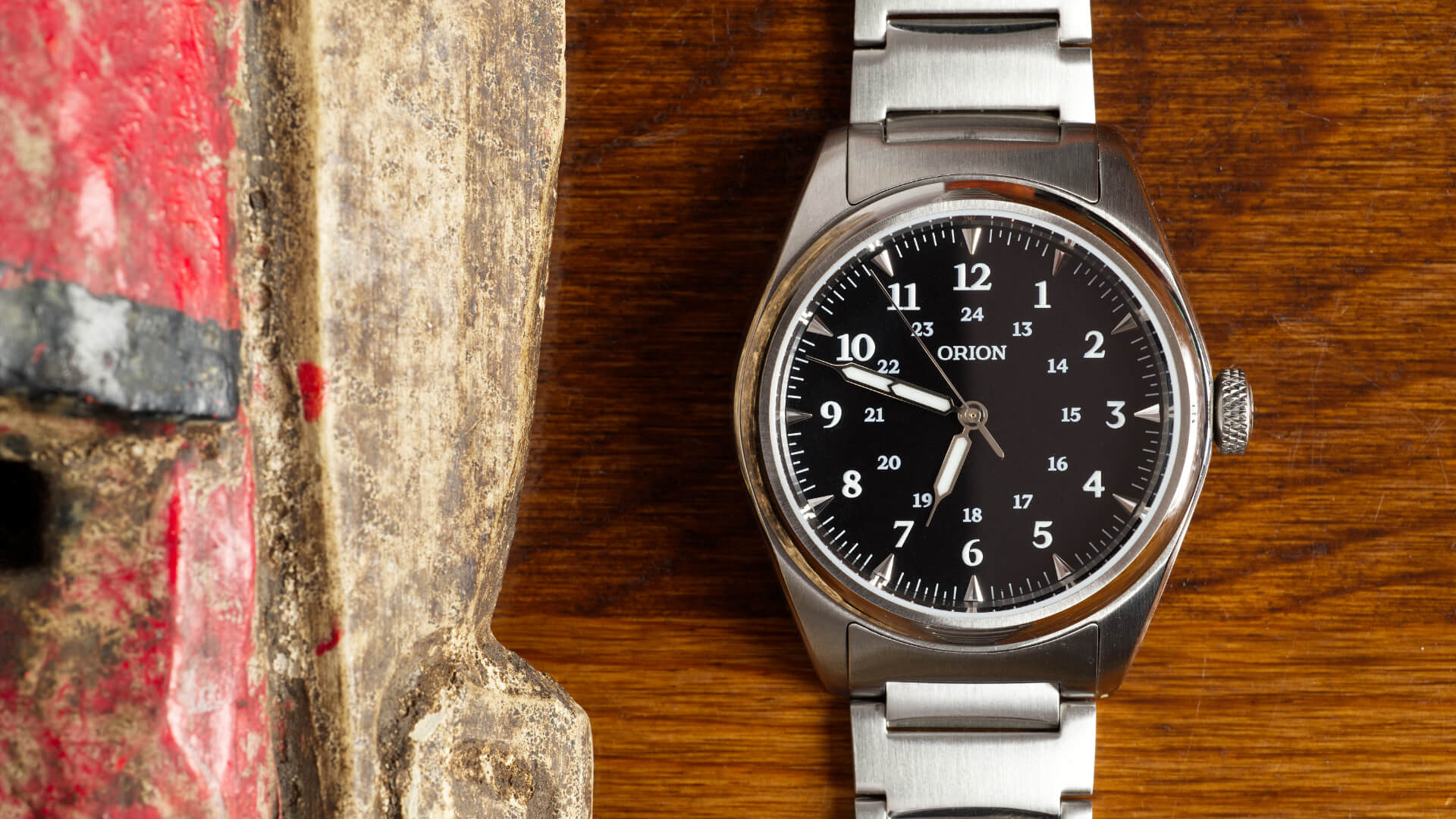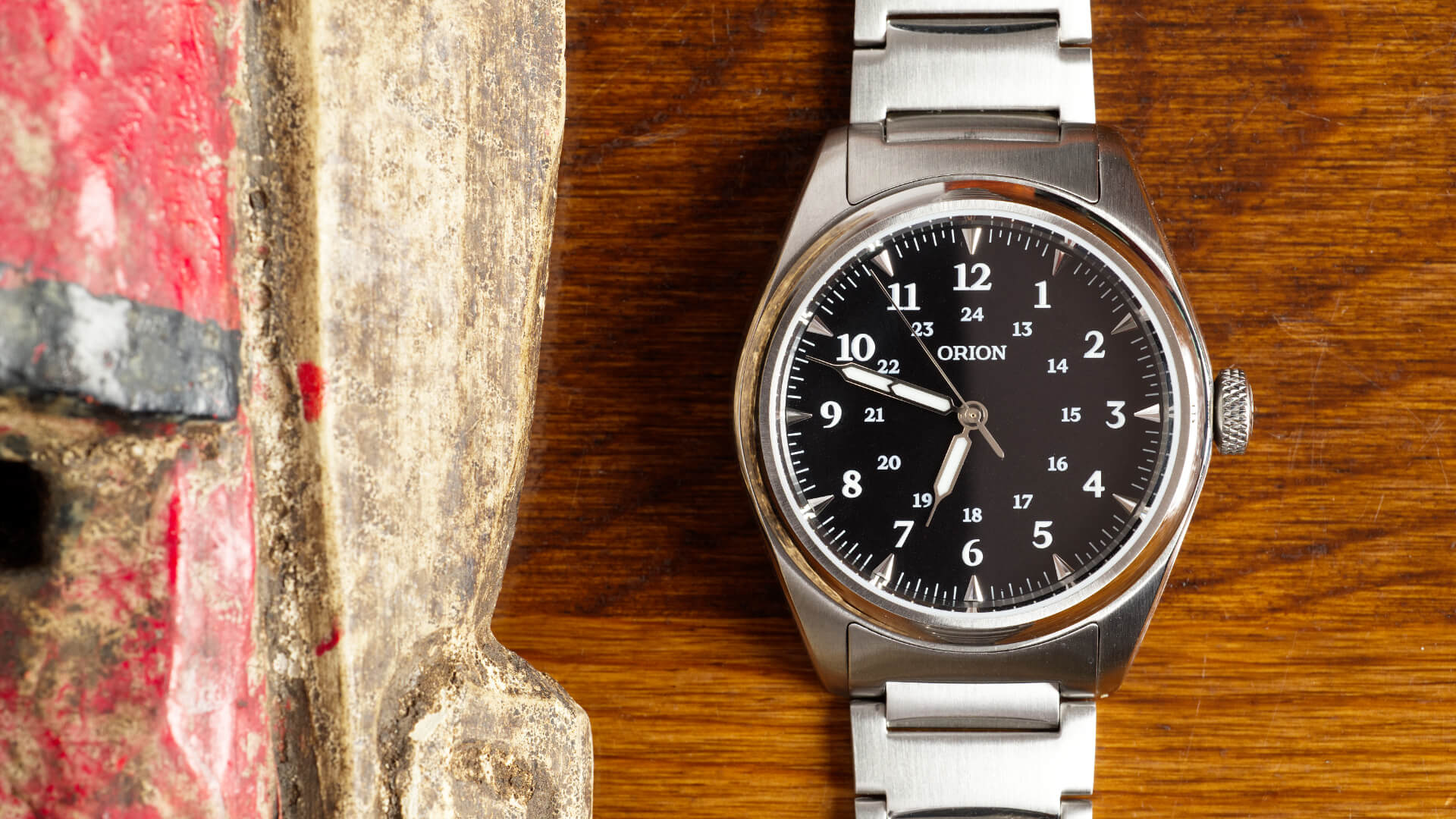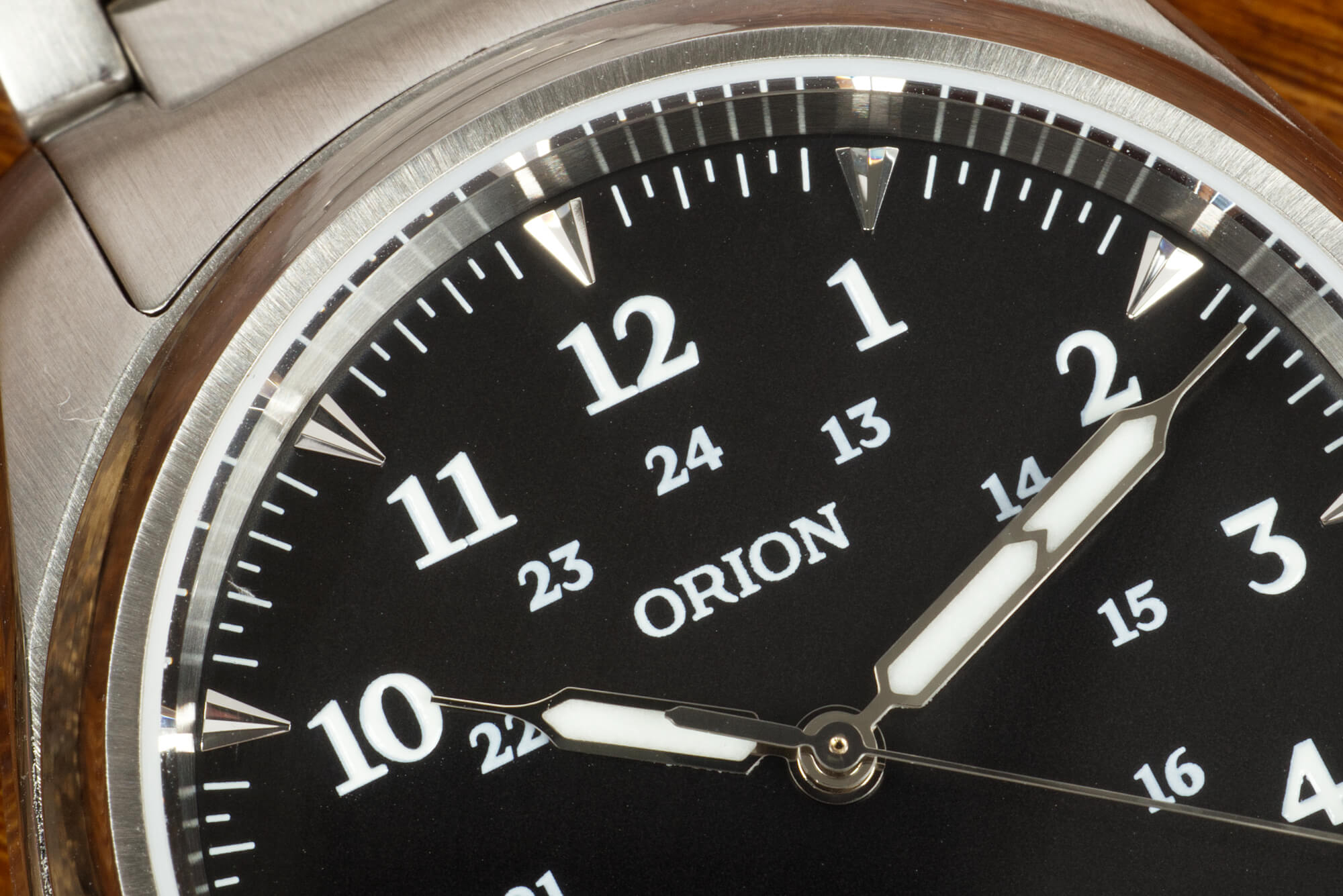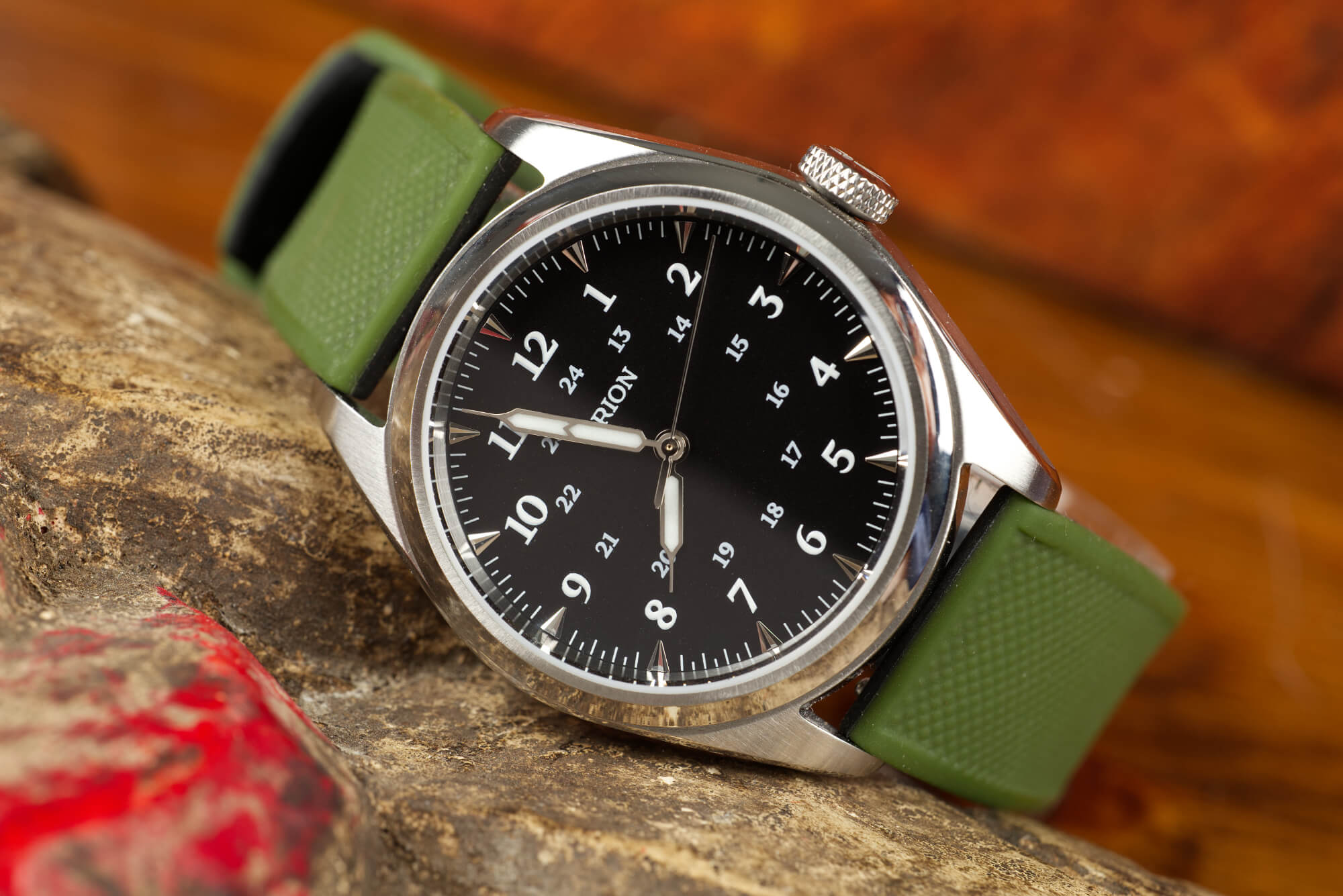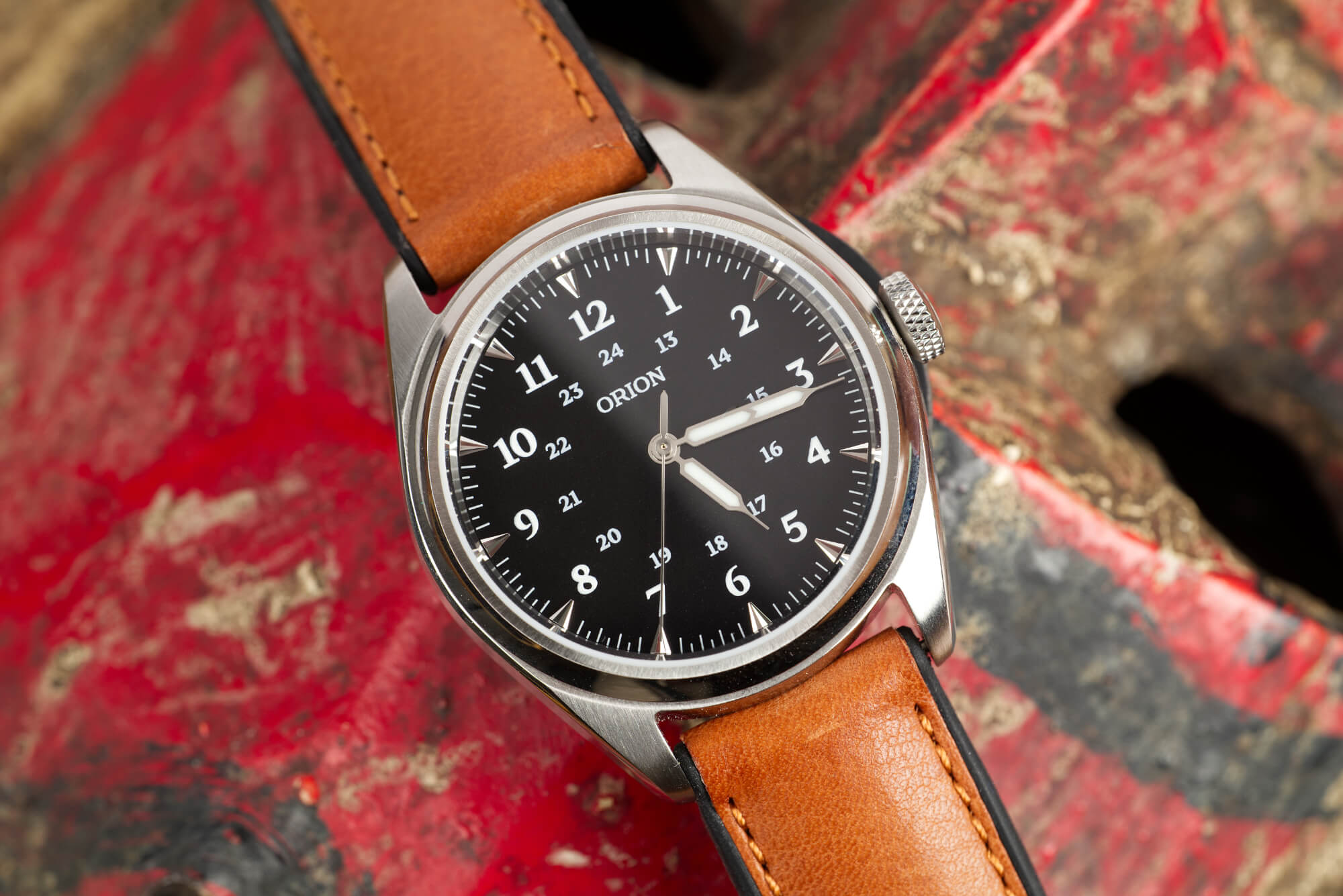
Nick Harris had big plans after completing his watchmaking training. He had already started Orion Watches by the time he graduated from watchmaking school, having originally used the brand to fund his education. The dream was to do it all: hands, dials, cases, and even movements, and to do it at a scale such that he wouldn’t be limited to producing a handful of six-figure watches each year. At the time, the U.S. infrastructure was lacking, to say the least, and he knew it would be a long, challenging task. And then he got hit with a wave of fatigue that didn’t stop. After years of doctor’s visits that ended in only more uncertainty, Harris accepted that his energy simply wasn’t coming back. What’s remarkable, though, is that he didn’t abandon his plan—he adapted. He wouldn’t be able to do everything himself, but he could bring others together to create a community of watchmakers and fabricators, finishers and machinists, who could share ideas and resources and form the foundation of an American watchmaking infrastructure that could ultimately—slowly—allow him to realize his dream.
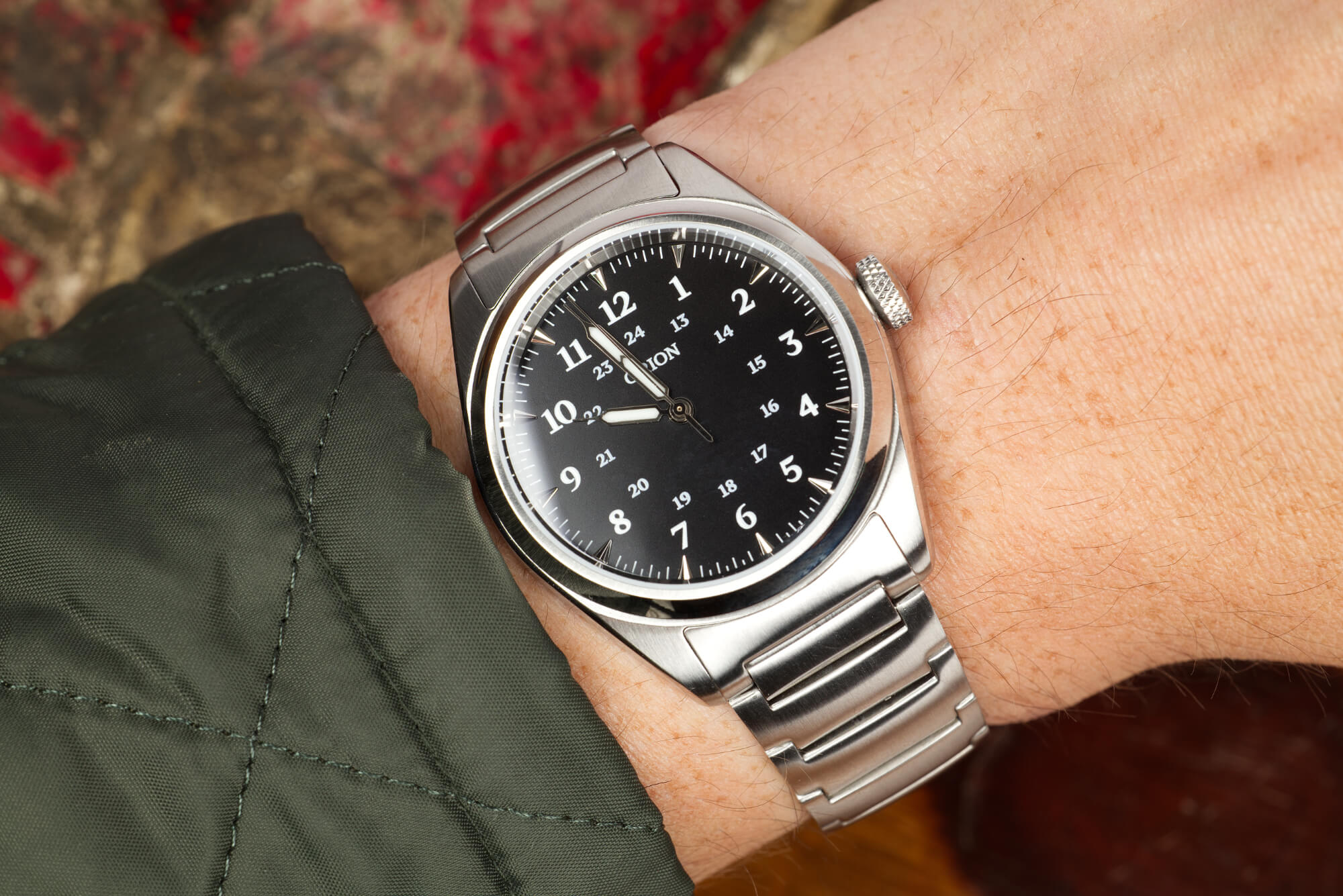
Orion Watches started as a modding project to support Harris while he was at watchmaking school and developed into a full microbrand after he graduated. But there are things that stand out, set it apart from other small brands. It doesn’t play on heritage, real or fabricated, instead resting upon the quality of the watches themselves and the reputation and knowledge of the man behind them. And the man behind them is an actual watchmaker, not an enthusiast or a designer or an entrepreneur; this has its occasional drawbacks, but ultimately it means the watches are designed inside and out by an exacting mind that handles all the testing and service in-house. In a way, the Field Standard has been the through-line since Orion’s beginning: it started as a Seiko mod, then was the third model offered on Orion’s first case platform, and now is reestablished with the brand’s Hellcat case and bracelet platform. The Orion Field Standard is a deceptively simple watch that is pleasing at almost every turn.
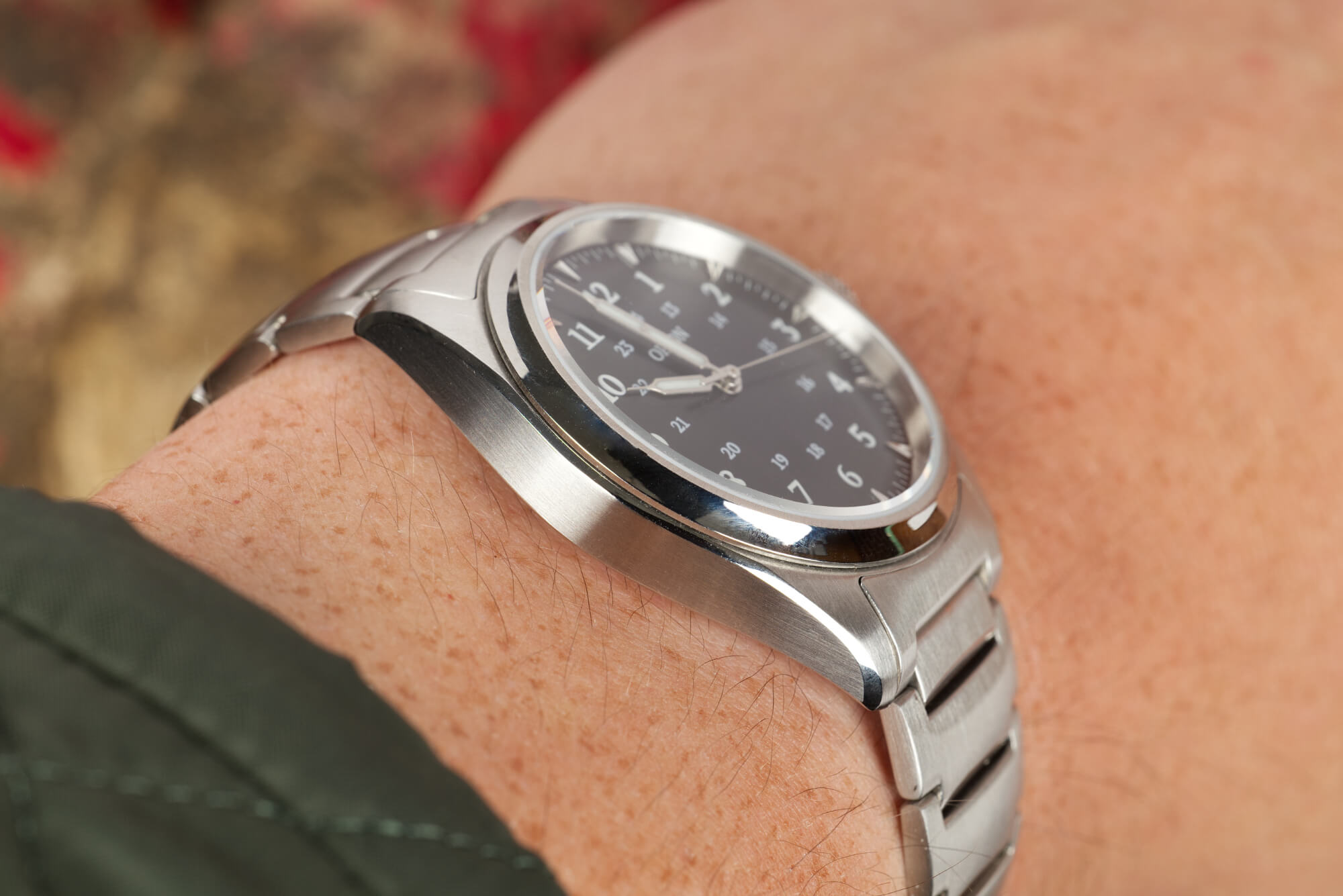
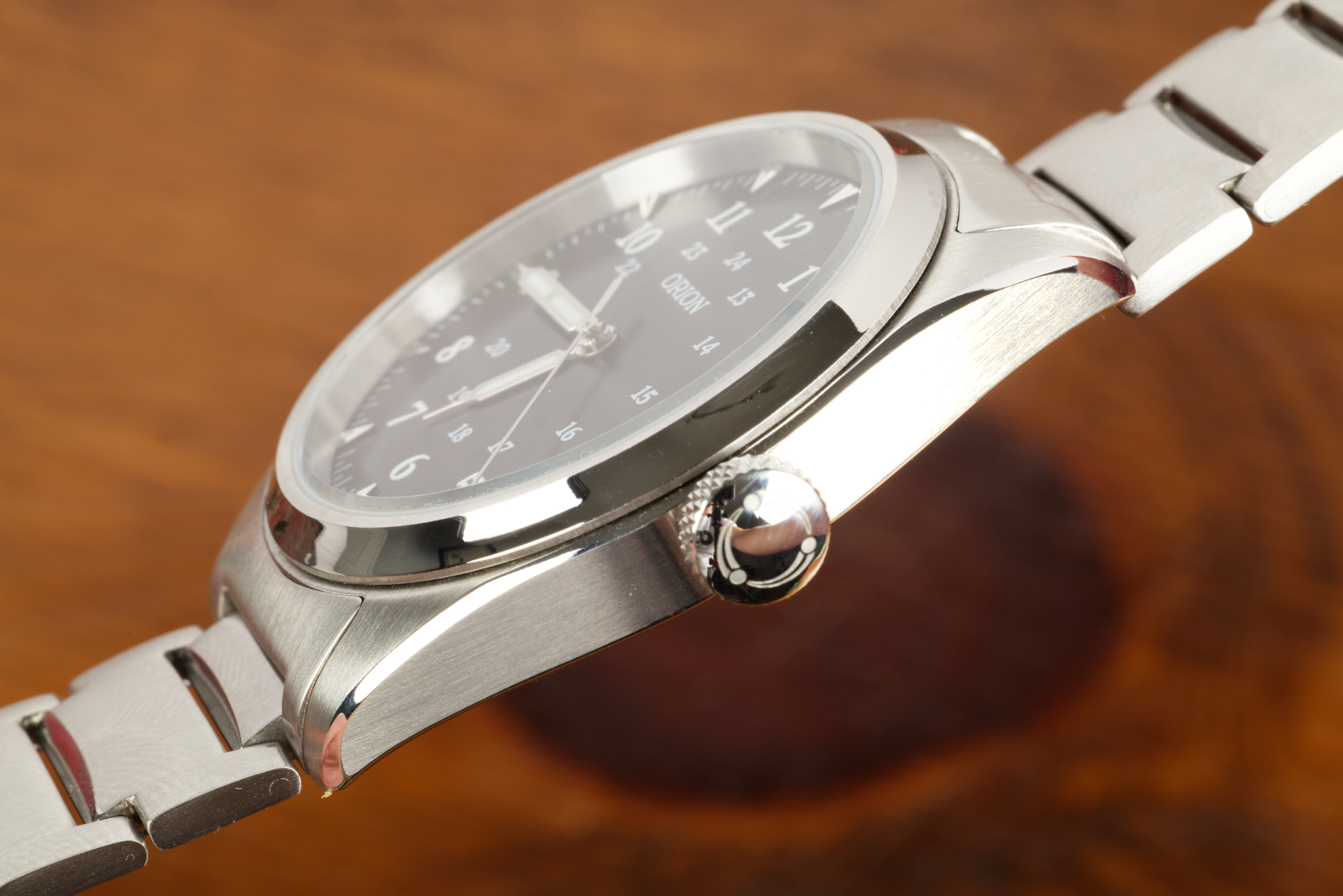
As mentioned, the Orion Field Standard is housed in the Hellcat case (with its matched bracelet). This is a good thing. The 39mm case is a wonderful 10.5mm-thin, but that’s just the spec sheet. The real trick here is the curved caseback (which can be seen in a number of the pictures in this review). Comfort has been a hallmark of Orion since the first models with their long, swooping lugs, and continuing with the introduction of a curved caseback on the Calamity diver. Here, the curvature pares down the already-trim profile and, with the gently curved lugs and a 47mm lug-to-lug, allows for an effortless wear. The case itself is decidedly more refined than most field watches: a long polished chamfer along the edge, fine brushing, and a concave polished bezel afford more day-to-day versatility than other field watches, though that comes at the cost of having more surfaces to mar (of note, a few pieces will be made with blasted surfaces). The wide screw-down crown features pronounced knurling for a perfect grip and helps to ensure 100m of water resistance.
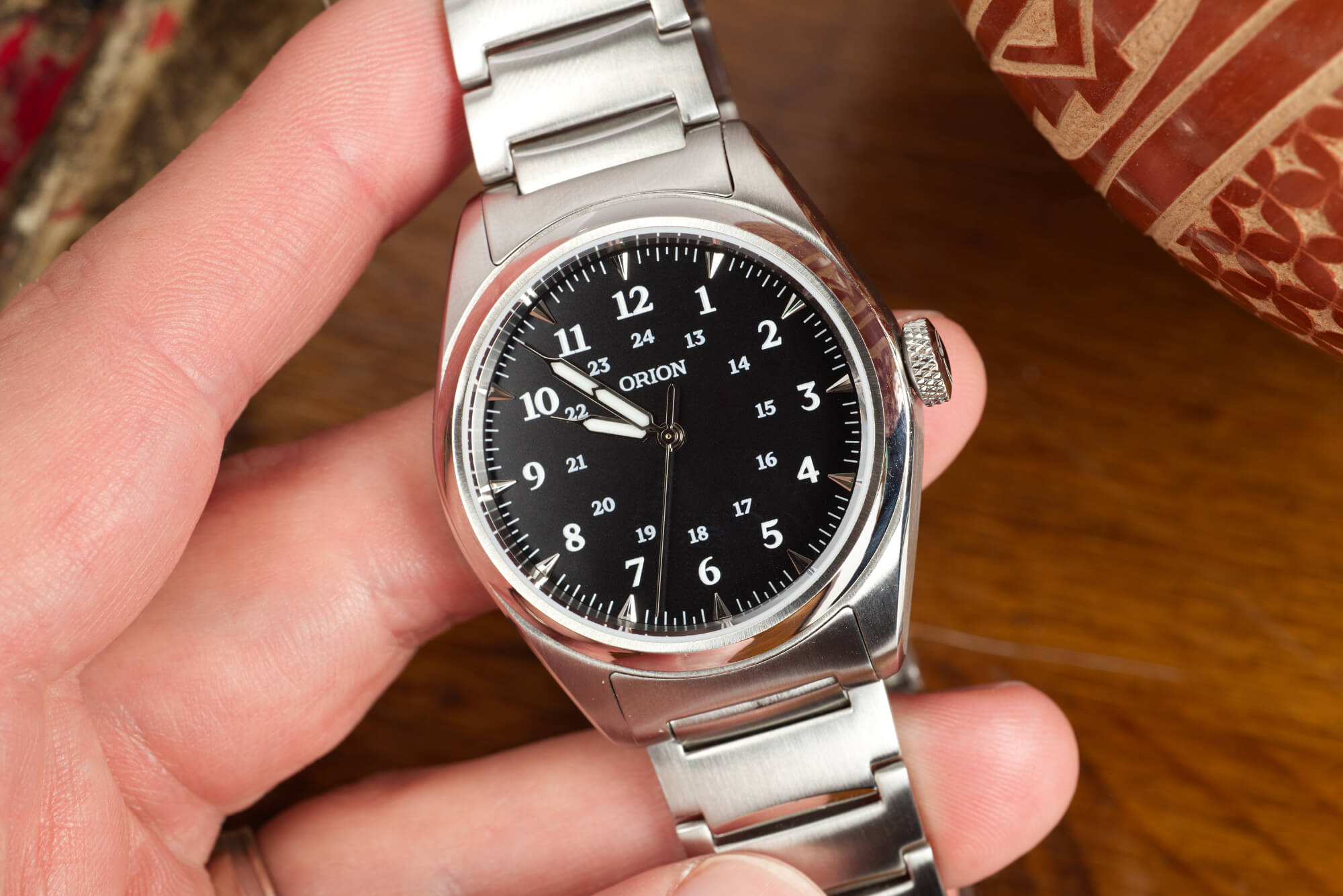

One of the recent models offered by Orion is the Tesseract, a watch that uses the same case and bracelet as the Field Standard but with a stunning handmade dial with a repeating tesseract pattern. That watch was one of the first Orion models to bear the fruits of Harris’ community-building efforts, as the dial was a collaboration with fellow American craftspeople. But the Field Standard is not that; the dial won’t stun anyone, but it is refined and complements the case. Under the sapphire crystal, one of the subtle design elements I appreciate is the stepping-up that occurs in the printing and indices from the center of the dial out: the 13-24 numerals are simply printed in white, and the 12-hour markings are printed with Super-LumiNova BGW9 and slightly raised, and at the periphery are high-polished applied indices. It’s an extremely subtle transition that exemplifies the attention to detail you find on Orion watches.
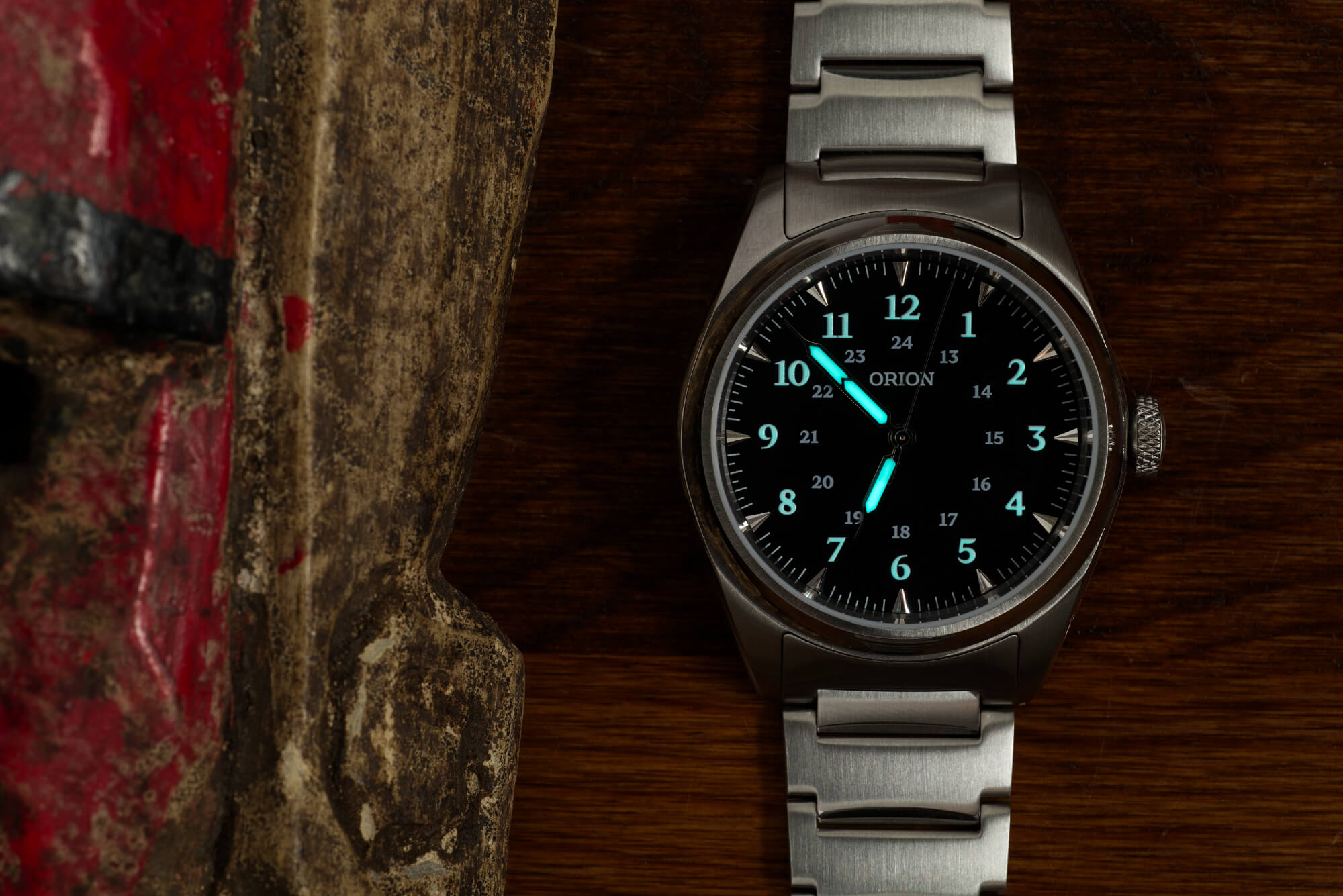
While the lume on the Field Standard is certainly adequate for any use I can imagine, the hands do shine brighter and more evenly than the printed numerals. What’s striking, though, is how much light the polished indices pick up; in low-light environments, you almost don’t need the lume and can rely on the markers themselves, reflective as they are. The hands are a stylized syringe style, with a chevron bisection through the minute hand. Their high polish allows them to catch light brilliantly, though that obviously means without light they feel a bit lifeless albeit just as legible. One thing I do want to address is the lack of a date. First, forgoing a date allows the dial to maintain its visual balance across all axes. Second, you may think a field watch needs a date in pursuit of functionality, but this is neither true with regard to historicity or modernity. The A-17 military spec (which succeeded the original A-11 which lacked the 24-hour scale) did not call for a date display, and even contemporary examples of field watches are rife with dateless dials from brands ranging from Vaer to Formex (and even Rolex, if you count the Explorer I).

The screw-down caseback is a thing of elegance. While the high polish may attract scuffs, it is delightfully devoid of all the specs and branding you often encounter on casebacks (whether it’s Timex or F.P. Journe). Instead, Harris has engraved the constellation of Orion (see the belt?) upon the curved surface, with the constituent stars accurately scaled and Betelgeuse identified with an actual star. Under the hood is the ever-reliable Miyota 9039. Since its introduction to the market in 2018, the 9039 has become the go-to movement for smaller brands that want a proper no-date movement. The movement features a 42-hour power reserve, a beat rate of 28,800 vph, and 24 jewels. The accuracy is quoted by Miyota at -10/+30 seconds per day, and each movement is tested by Harris. While -10/+30 may not sound great to those with unrealistic punctuality needs, I can anecdotally attest to having had several watches with this movement that run much better than that.
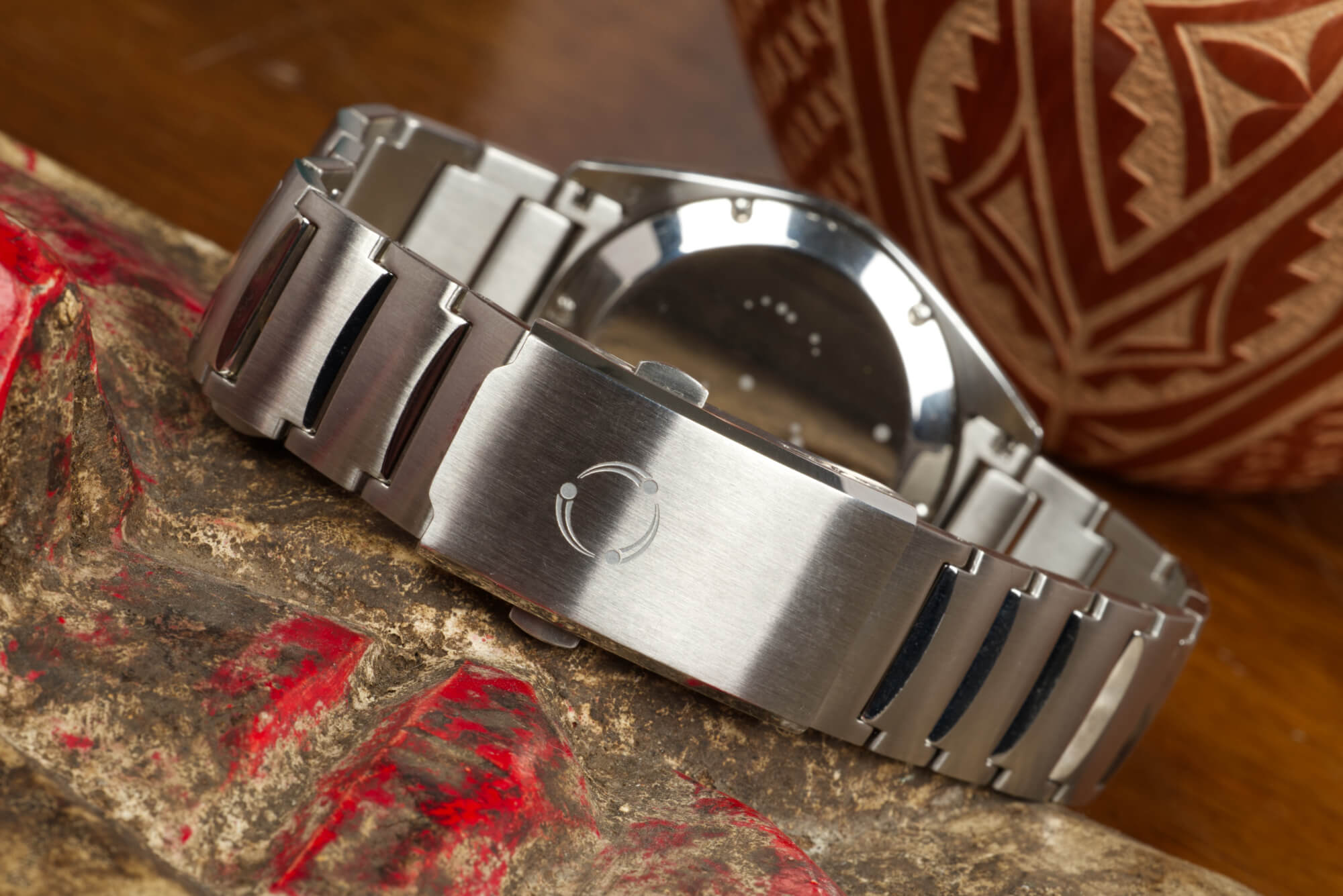
One of the highlights of this watch—and the other Orion models that share the platform—is the bracelet. When I first reviewed an Orion Hellcat, the bracelet had not been released, so I was left wanting. Now, having experienced it, I’m blown away. The clasp is a stock option I’ve seen on other small brands’ bracelets, and it’s one of my favorites, as it maintains a slim profile and a clean look and affords a secure closure. The bracelet itself, though, is on another level. It’s thin to the point where you assume it will be cheap, but once you handle it, its quality is clear. The links themselves have great articulation, which combines with their svelte profile to create amazing comfort on the wrist. From a design perspective, I love the scalloped polishing on the base of each link. The one nit to pick here is that the bracelet does not offer quick-release (Harris has yet to be convinced of the advantages, arguing that there’s a higher fail rate which results in an unusable bracelet); there are no drilled lugs (which is fine, as it keeps the case clean), and the bracelet-case fit is very snug. That is to say, having spring bar tweezers goes a long way to ease removing/seating the bracelet. Once you manage it, though, the watch is a pleasure on a huge variety of straps, unsurprising given its simple black/white/steel design.
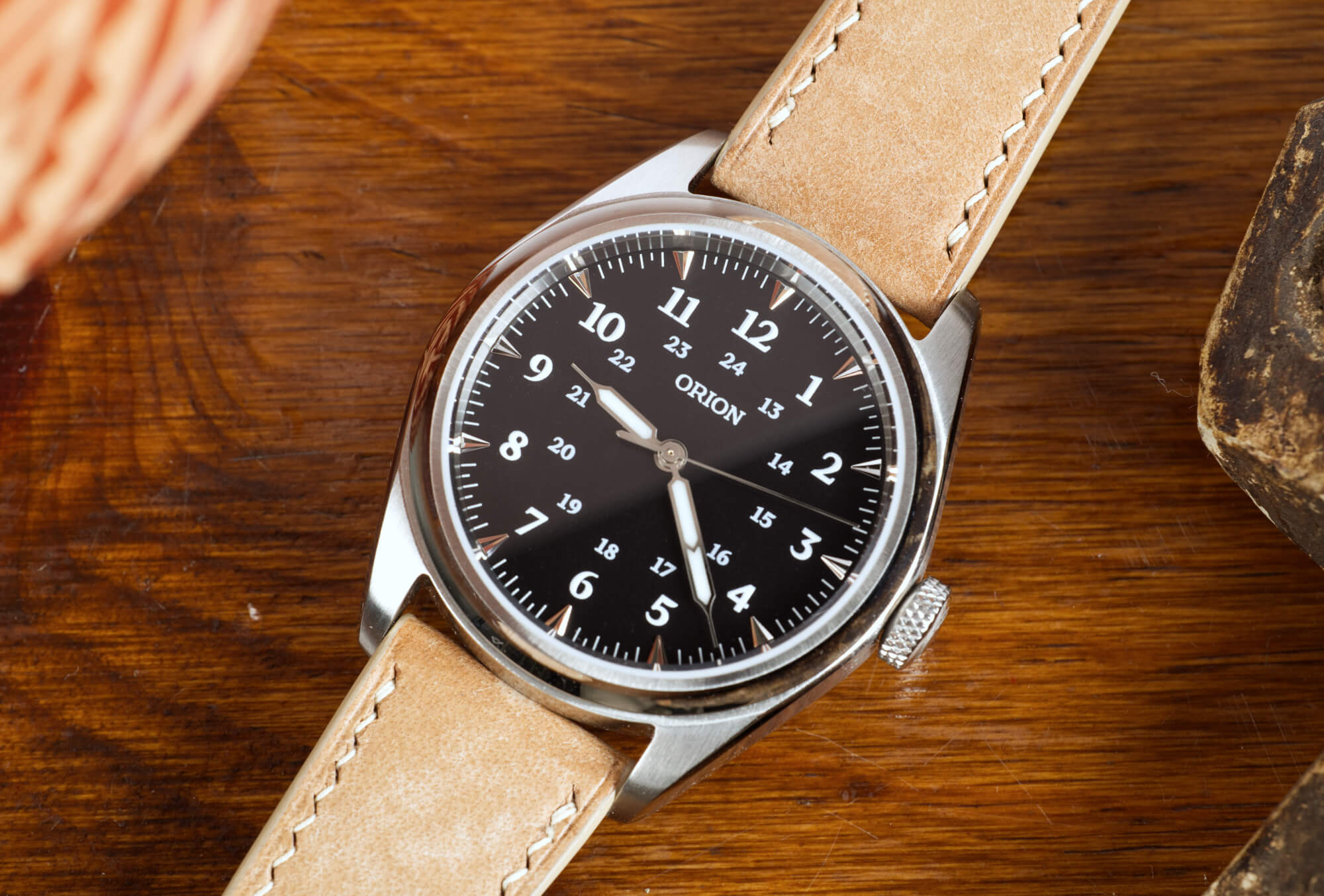
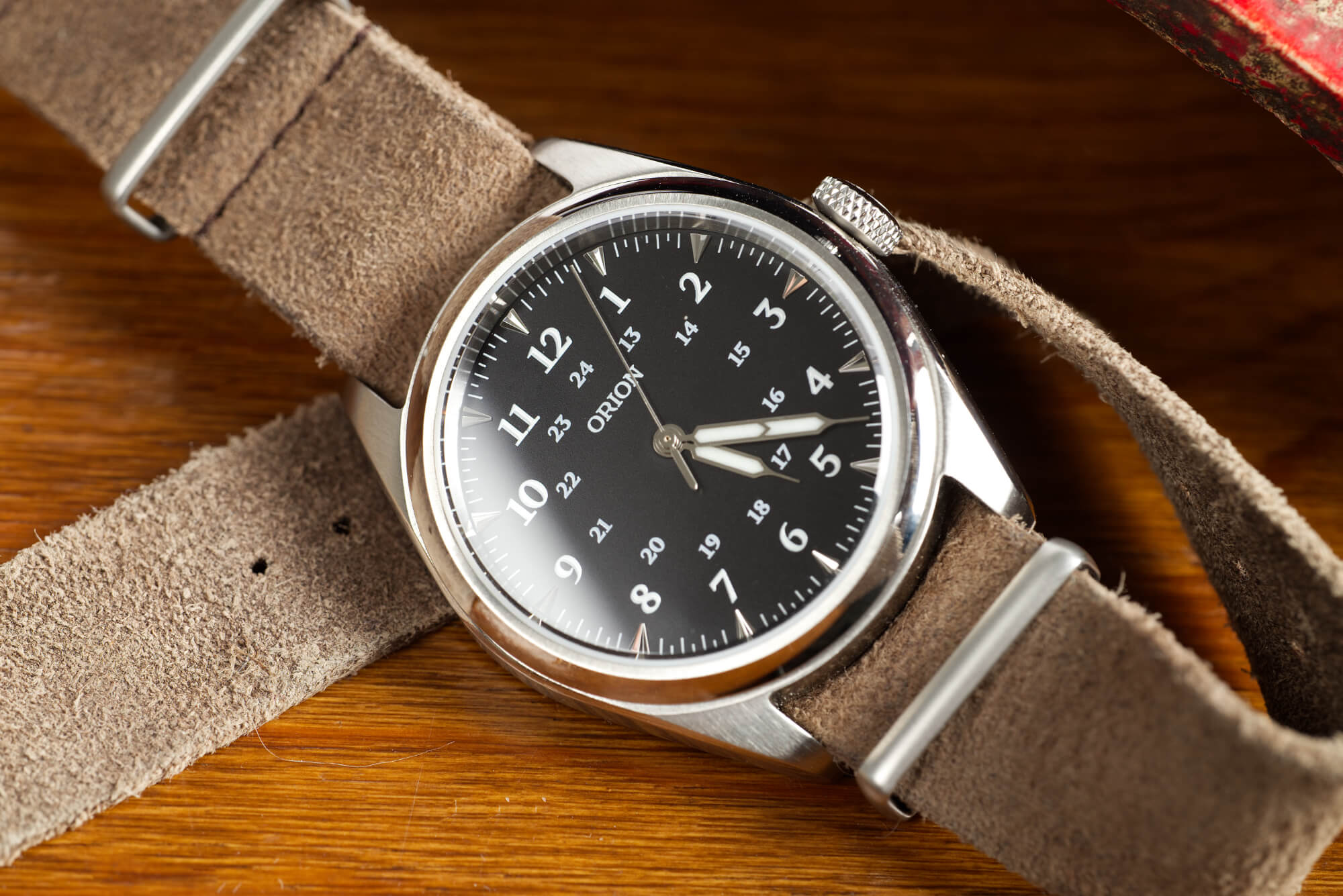
In its third iteration under the Orion name, the Field Standard is more than just another model from another small brand. It represents the maturity of a brand that, like much larger brands, revisits and refines its designs, rather than focusing on a stream of new-new-new. In chatting with Harris about Orion and the Field Standard, he remarked that his goal is and always has been to make something worth fixing. It’s an interesting take on the idea of building something that lasts. Anything can be made to last a long time, but it’s quite a different endeavor to make something that people actually want to have fixed so they can continue enjoying it. I’ve handled and reviewed almost every model Orion has produced, and each one achieves Harris’ goal. Like the Field Standard, the other models wear incredibly well, making it hard to take them off at the end of the day (and even harder to send back after review!). The Field Standard could be seen as just another field watch—it is—but it’s also a refinement of an idea that represents a brand and a man trying to do a bit more and be a bit different, with a long view towards building watches in America through supportive collaboration. I think that’s something we can all get behind. Limited to 40 pieces, the Orion Field Standard is priced at $725. For more information, please visit the brand’s website.
Necessary Information:
>Brand: Orion
>Model: Field Standard
>Price: $725
>Size: 39mm-wide, 10.5mm-thick, 47mm lug-to-lug
>When reviewer would personally wear it: Outside of rougher adventuring, almost all the time given its wearability and versatility on straps
>Friend we’d recommend it to first: Someone looking for a single watch they can wear for almost every occasion, or a more seasoned collector looking for a versatile affordable piece from a brand with a real story
>Best characteristic of watch: Absolutely stunning case with curved back, as well as the incredibly thin and comfortable bracelet; legible
>Worst characteristic of watch: The dial can play a bit flat at a glance, lume is just adequate, strap changes can be a pain

